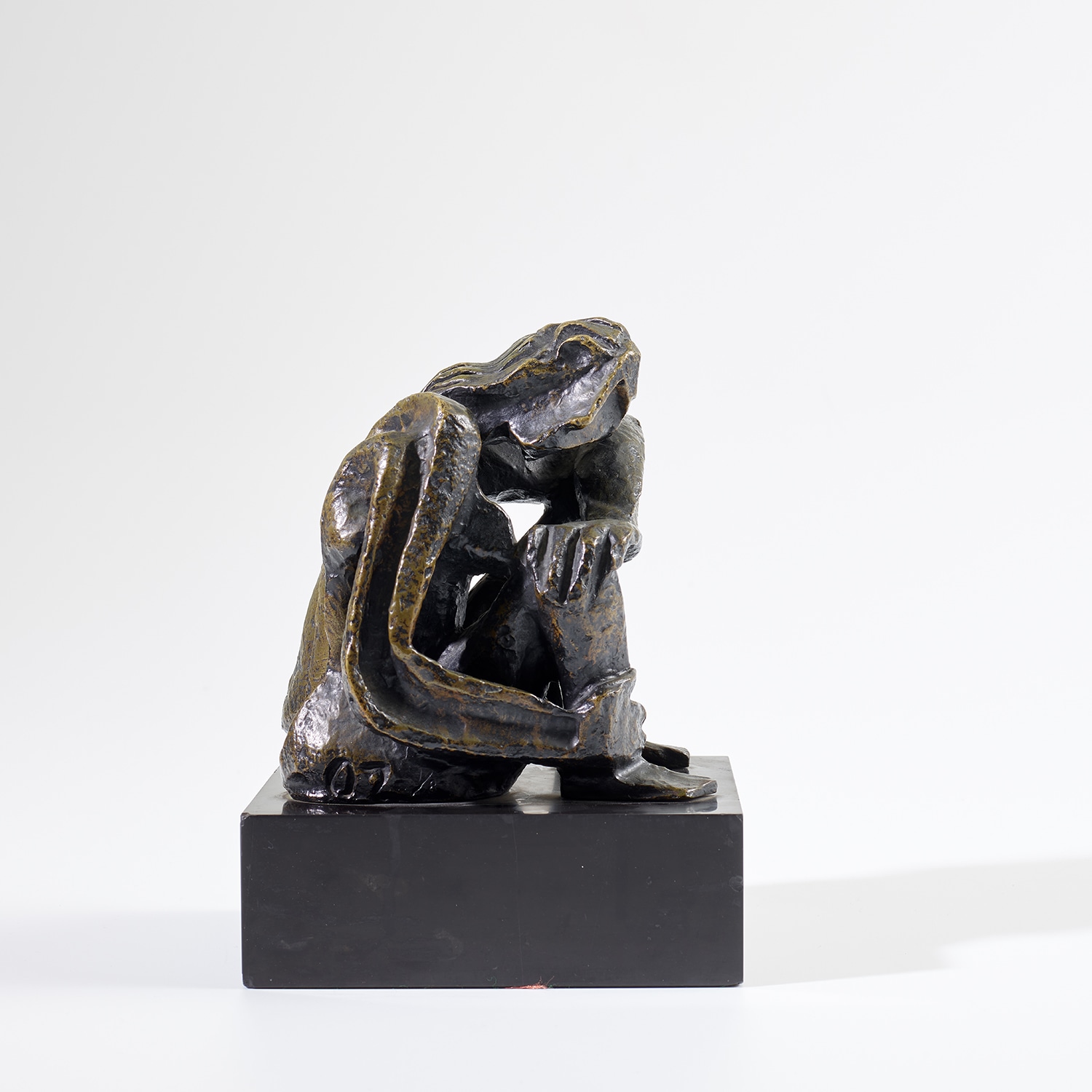

89
Ossip Zadkine
Le Repos
incised with the artist’s initials, numbered and stamped with the foundry mark ‘OZ 1/8 Susse Fondeur, Paris’ on the base
bronze
17 x 11 x 16 cm (6 3/4 x 4 3/8 x 6 1/4 in.)
Conceived in 1966 and cast in 1971, this work is number 1 from an edition of 8 plus 1 cast numbered 0/8 and 2 artist’s proofs.
Another example from this edition is in the permanent collection of the Musée Zadkine, Paris.
Another example from this edition is in the permanent collection of the Musée Zadkine, Paris.